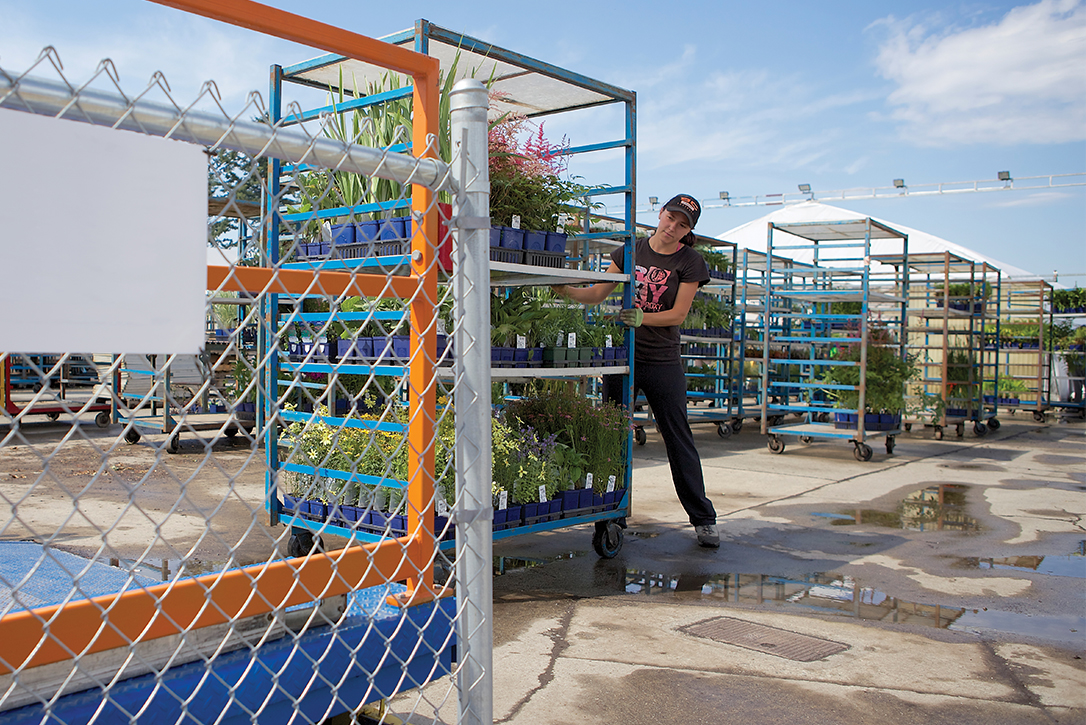Hantavirus is a virus carried by rodents that can cause hantavirus pulmonary syndrome (HPS) in humans.

Photo Credit: © WorkSafeBC (Workers’ Compensation Board of B.C.), used with permission
Spring and summer are the time of year when building supply stores and nurseries bring out all the fresh flowers, plants, and grass seeds. And while those with green thumbs can’t wait to dig in and get gardening, there’s another creature equally as excited for this time of year: rodents!
“All the seeds are like an all-you-can-eat buffet and all the mice want to join the party!” joked Tami Der, WorkSafeBC occupational health and safety consultant, when we spoke about seasonal hazards that employers in building supply and gardening industries should look out for. Jokes aside, rodents can not only cause serious damage to property, landscaping, and electrical components but can also spread dangerous diseases such as hantavirus.
Hantavirus is a virus carried by rodents that can cause hantavirus pulmonary syndrome (HPS) in humans. The virus is transmitted when particles of infected rodent saliva, urine, or droppings are inhaled. This can happen when areas with mice or their droppings are disturbed.
Symptoms can begin 5 to 45 days after exposure and are flu-like, with a fever, nausea, sore muscles, and vomiting. But as the disease progresses, fluid can build up in the lungs and lead to more serious symptoms such as respiratory failure, which can be fatal. In 2021 a worker became seriously ill after cleaning up a rodent infestation at a retail store and warehouse.
What do employers need to know?
If your risk assessment shows that workers could be exposed to rodents as part of their normal job duties, employers must comply with the sections on biological hazards in Part 6 of the Occupational Health and Safety Regulation to protect workers from infectious disease.
“Employers must develop an exposure control program (ECP) that eliminates or minimizes the risk of hantavirus exposure in their workplace,” says Tami. This includes:
- Identifying all work activities that have a risk of exposure
- Informing workers on how to eliminate or reduce their risk of exposure, symptoms to watch out for, and how to report any exposure incidents
- Providing workers with written safe work procedures and the appropriate PPE
- Monitoring to ensure safe work practices are being followed
- Providing necessary training and supervision to workers
“Unfortunately, there’s no way to know if a rodent has the virus, so, if you have a pest problem or have a workplace that is more susceptible to attracting rodents, then you must take action to protect your workers,” says Tami. “Conduct regular assessments of your worksite and job activities, put in the appropriate safety controls, and ensure all your staff are aware of the risks and have completed their safety training.”
To read the guidelines for employers on preventing hantavirus infections and how to put in place an ECP to minimize potential worker exposure, see the WorkSafeBC booklet: A Hantavirus Exposure Control Program for Employers and Workers.


